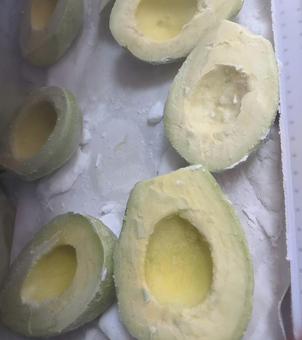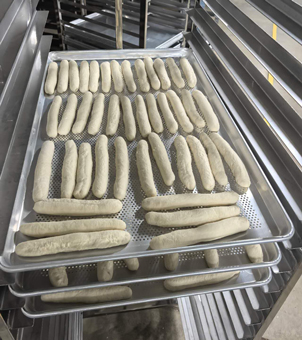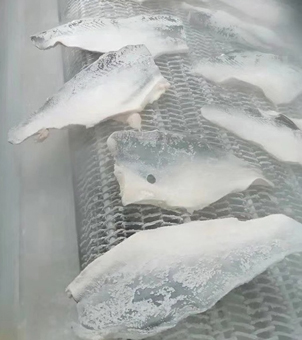1. Nutrient Preservation as a Core Competitiveness in Food Processing
In the global food industry, consumers are increasingly focused on “health” and “authentic taste.” Whether in high-end dining, international trade, or household consumption, the freshness and nutritional value of food directly influence market acceptance and pricing. However, traditional freezing methods, while preserving food, often come with nutrient loss and changes in texture. Vitamins, proteins, and other active components are extremely sensitive to temperature and time; mishandling can significantly reduce the food’s value.
Liquid nitrogen (LN?) flash freezing offers a breakthrough solution to this challenge. It excels not only in preserving appearance and texture but also demonstrates advantages in maintaining nutritional content that conventional freezing cannot match.
2. How Liquid Nitrogen Flash Freezing Works: Speed Determines Quality
Liquid nitrogen is an inert coolant with a temperature as low as -196°C. LN? flash freezing equipment cools food rapidly through spraying, immersion, or vapor-phase methods, bringing it from ambient temperature to deep freezing in a very short time.
Rapid Cooling
Traditional freezers cool slowly, allowing ice crystals to form and grow between cells, rupturing cell membranes. LN? freezers can drop temperatures by tens of degrees Celsius per minute, almost instantly passing through the “maximum ice crystal formation zone,” creating small, uniform ice crystals within the cells.Micro-Ice Crystal Effect
These tiny ice crystals do not damage cell structure. After thawing, juice loss is minimal, and texture and elasticity remain intact. This is the core physical mechanism behind LN? flash freezing’s superior nutrient preservation.Oxygen-Free Process
As an inert gas, liquid nitrogen isolates food from air during freezing, suppressing oxidation and minimizing chemical degradation of nutrients.
3. Mechanisms by Which Liquid Nitrogen Protects Nutrients
LN? flash freezing is not merely “fast freezing”; its impact on nutrient retention occurs on multiple levels:
Protein Stability
Proteins form the structural and functional basis of food. Traditional freezing often causes ice-crystal-induced cell damage, leading to protein denaturation and dry, tough textures after thawing. LN? flash freezing minimizes tissue damage, preserving natural protein conformation and functionality, making it ideal for high-protein seafood, meats, and functional foods.Vitamin Retention
Water-soluble vitamins such as vitamin C and B-complex are highly susceptible to loss during freezing and storage. LN? freezing rapidly suppresses enzyme activity that degrades vitamins and reduces oxidative reactions, maintaining significantly higher vitamin C levels over extended cold storage compared to conventional freezing.Protection of Unsaturated Fatty Acids
Foods like deep-sea fish and nuts are rich in unsaturated fatty acids, which are prone to rancidity. LN? flash freezing combines low temperatures and oxygen isolation to significantly slow lipid oxidation, preserving both aroma and nutritional value.Minerals and Trace Elements
Minerals are generally stable during freezing, but cell damage can cause them to leach out with food juices. LN? flash freezing minimizes juice loss, naturally retaining more minerals.



4. Key Factors in Reducing Nutrient Loss
Inhibiting Enzyme Activity
Foods contain various natural enzymes (e.g., lipase, polyphenol oxidase, proteases) that continue to break down nutrients at ambient temperature. The rapid cooling of LN? freezing nearly halts all biochemical reactions instantly.Suppressing Microbial Growth
Low temperatures inhibit bacteria and mold growth and prevent their metabolic activities from damaging nutrients. This is also key to LN?-frozen foods maintaining longer shelf life while preserving nutritional value.
5. Differentiated Advantages Compared to Traditional Freezing
| Indicator | Traditional Freezer | Liquid Nitrogen Freezer |
| Cooling Speed | Slow (hours) | Extremely fast (minutes) |
| Ice Crystal Size | Large & uneven | Small & uniform |
| Cell Damage | Significant | Minimal |
| Nutrient Retention | Medium | High |
| Thawing Juice Loss | High | Low |
| Shelf Life | Medium | Long |
6. Industry Trends and Commercial Value
In the global food supply chain, nutrient retention and taste preservation have become crucial competitive points for export markets. LN? flash freezing enables companies to enter high-value markets while reducing losses during transportation and storage, lowering costs, and increasing profit margins.
The protection of nutrients in LN? flash freezing is not accidental “speed”; it results from the combination of scientific principles and precise engineering. It provides strong technical support for the food industry in global competition and offers consumers higher-quality, healthier choices. As health-conscious consumption and international trade grow, LN? flash freezing is set to replace conventional freezing in more food sectors, becoming the new standard for preservation.
In the field of liquid nitrogen flash freezing, SPEEDCRYO has over 10 years of cold chain technology expertise. Its equipment serves seafood processors, cold chain logistics companies, and high-end food manufacturers. Beyond providing stable and efficient LN? freezing machines, SPEEDCRYO offers free site planning and integrated cold chain solutions to ensure equipment performance aligns with production line requirements. This “equipment + solution” approach helps companies achieve both nutrient retention and efficiency improvements more quickly.
